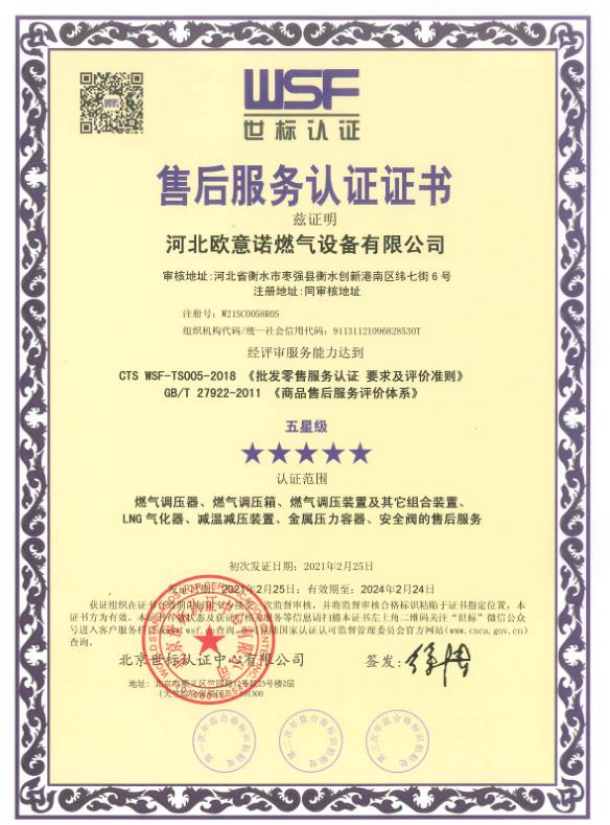
Nov . 16, 2024 02:49
Back to list
gas heat exchanger
Gas Heat Exchangers Efficiency and Innovation in Thermal Management
Gas heat exchangers are vital components in a variety of industrial and commercial applications. They are designed to transfer thermal energy between two or more gases without allowing them to mix, providing an efficient means to manage heat across different processes. As industries strive to enhance efficiency and reduce energy consumption, the role of gas heat exchangers has become increasingly significant.
Fundamental Principles
At their core, gas heat exchangers operate on the principle of thermal conduction, where heat is transferred from a hot gas stream to a cooler one. This process not only optimizes energy usage but also minimizes waste heat emissions, making systems more environmentally friendly. The efficiency of a gas heat exchanger is often determined by its design, including factors such as surface area, flow arrangement, and material selection.
There are several common types of gas heat exchangers, including plate, tube, and finned-tube exchangers. Plate heat exchangers consist of multiple thin plates stacked together, providing a large surface area for heat transfer in a compact form. Tube heat exchangers feature a series of tubes, allowing gas to flow through, while fins increase the surface area, enhancing heat exchange efficiency.
Applications in Various Industries
Gas heat exchangers find applications across numerous sectors, including power generation, petrochemical, and HVAC systems. In power generation, they are used to recover heat from exhaust gases to preheat incoming air or fuel, significantly improving overall system efficiency. In the petrochemical industry, they play a crucial role in processes such as natural gas processing and refining, where controlling temperature is essential for optimal chemical reactions.
gas heat exchanger

In the HVAC industry, gas heat exchangers contribute to energy-efficient building designs. By recovering heat from exhaust air, they provide preheated intake air, reducing the energy required for heating and cooling. This is particularly important in areas with drastic seasonal temperature changes, where maintaining comfortable indoor temperatures can be a challenge.
Innovations and Future Trends
Recent advancements in materials and design techniques have led to the development of more efficient gas heat exchangers. Enhanced designs, such as compact and modular heat exchangers, allow for better integration into existing systems, offering improved performance without requiring significant space. Moreover, the introduction of advanced materials, such as high-temperature alloys and composites, has expanded the operational capabilities of gas heat exchangers, enabling their use in harsher environments.
The future of gas heat exchangers is also being shaped by the growing emphasis on sustainability. As industries move towards reducing their carbon footprint, the demand for innovative solutions that can maximize energy recovery and reduce emissions is on the rise. The integration of smart technologies, including sensors and real-time monitoring systems, allows for dynamic adjustments to be made based on operating conditions, further enhancing efficiency.
Conclusion
Gas heat exchangers play an indispensable role in modern industrial processes, contributing to energy efficiency and environmental sustainability. As technology continues to advance, the designs and applications of these heat exchangers will evolve, paving the way for innovations that meet the needs of an energy-conscious world. Through continuous improvement in efficiency and performance, gas heat exchangers will remain a critical component in the quest for sustainable thermal management solutions across diverse industries.
Next:
Latest news
-
Safety Valve Spring-Loaded Design Overpressure ProtectionNewsJul.25,2025
-
Precision Voltage Regulator AC5 Accuracy Grade PerformanceNewsJul.25,2025
-
Natural Gas Pressure Regulating Skid Industrial Pipeline ApplicationsNewsJul.25,2025
-
Natural Gas Filter Stainless Steel Mesh Element DesignNewsJul.25,2025
-
Gas Pressure Regulator Valve Direct-Acting Spring-Loaded DesignNewsJul.25,2025
-
Decompression Equipment Multi-Stage Heat Exchange System DesignNewsJul.25,2025

